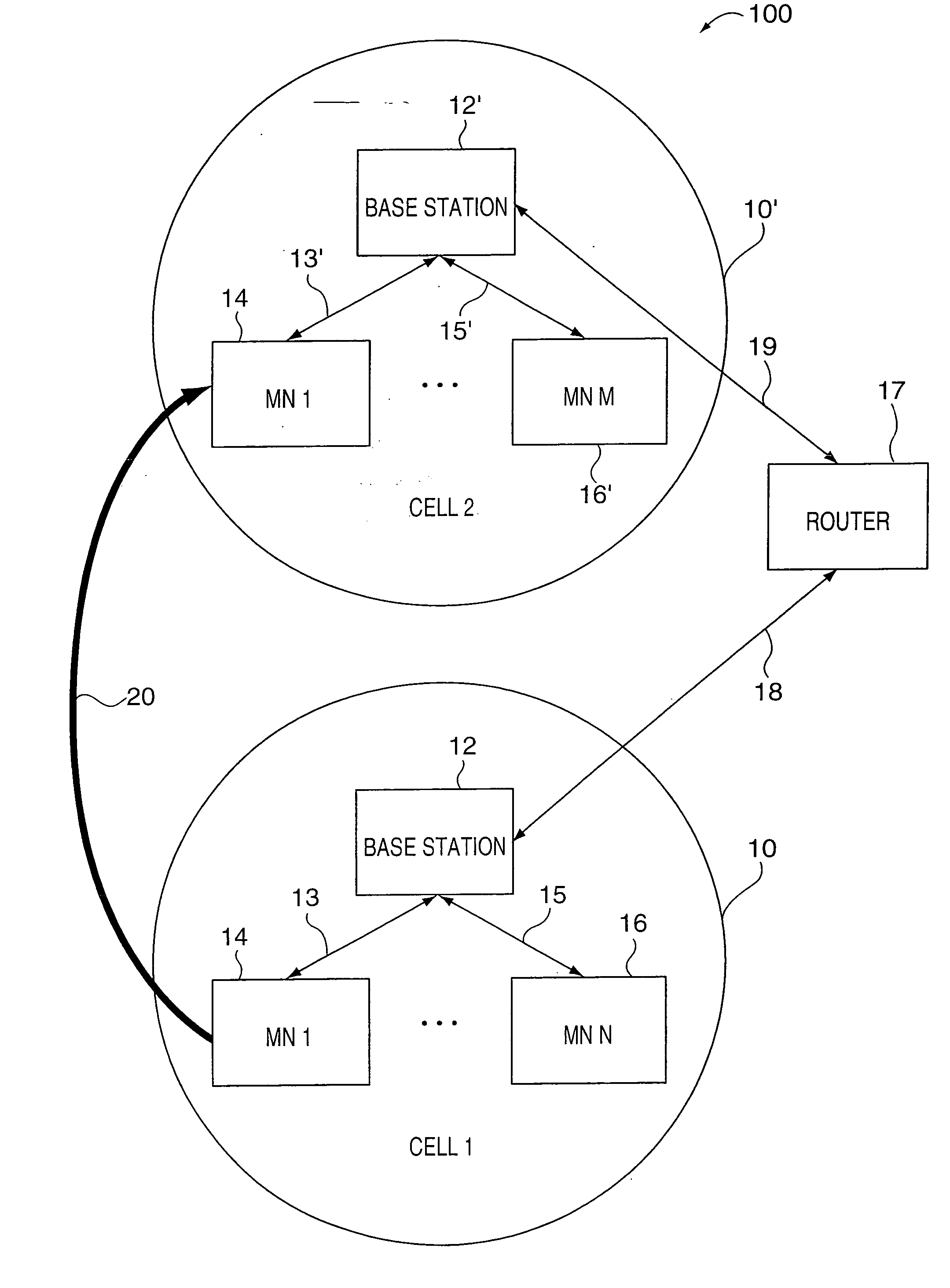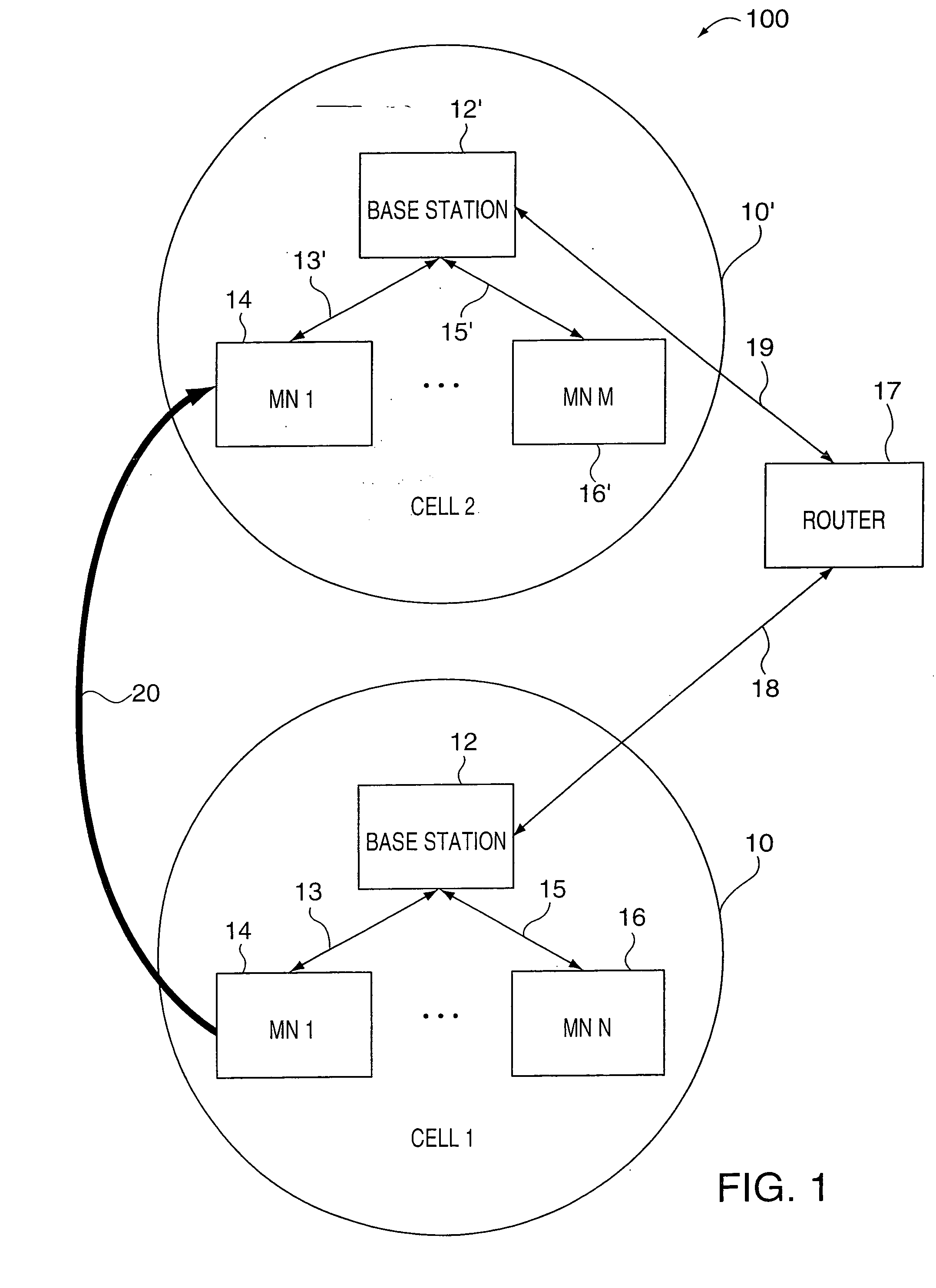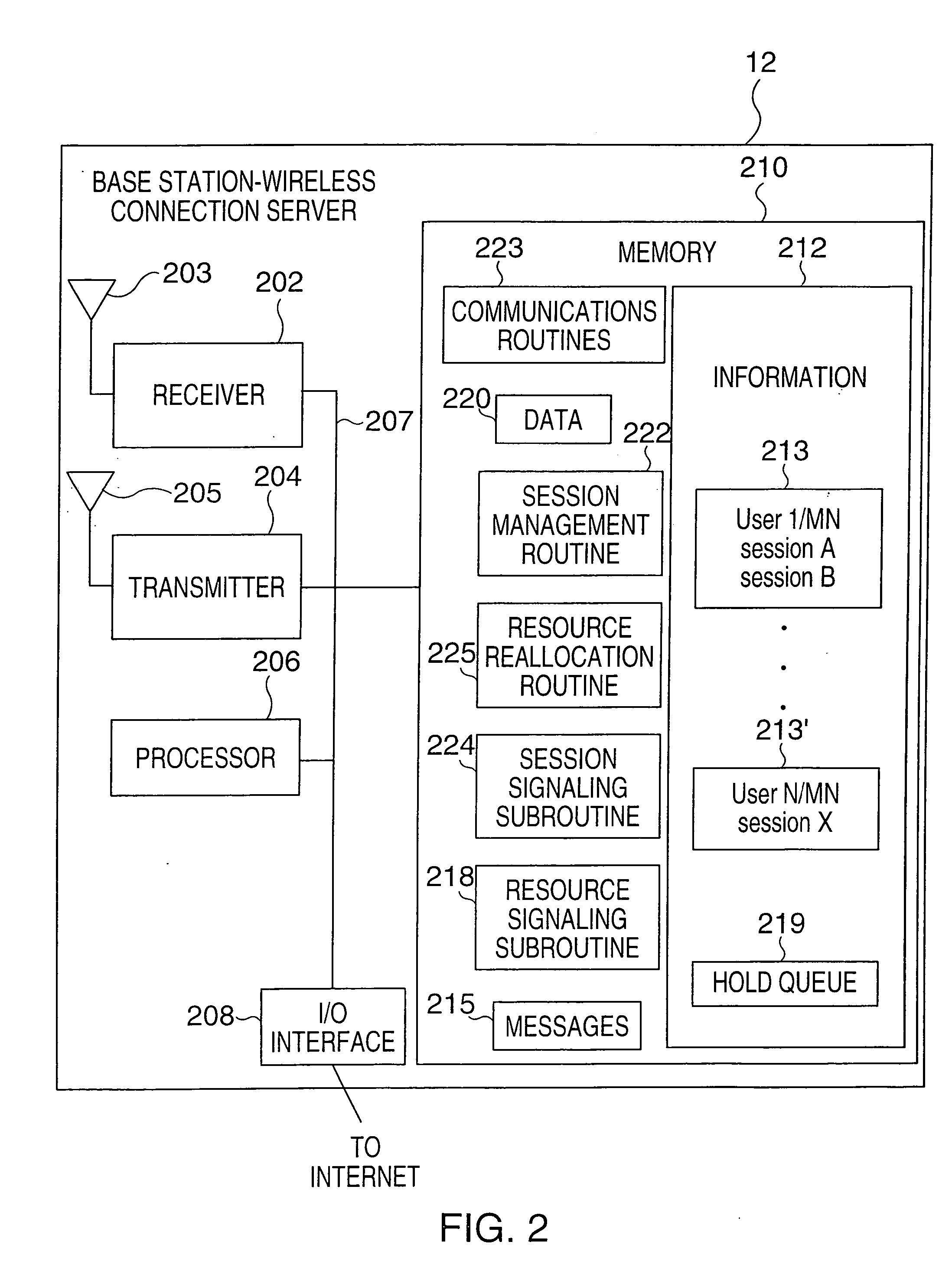Methods and apparatus for controlling IP applications during resources shortages
- Summary
- Abstract
- Description
- Claims
- Application Information
AI Technical Summary
Benefits of technology
Problems solved by technology
Method used
Image
Examples
Embodiment Construction
[0034] The present invention relates to communications session and resource management and, more particularly to methods and apparatus for enabling a mobile node to maintain a communications session despite a decrease in resources, e.g., temporary reduction or loss of bandwidth, used to support the communications session.
[0035] Various aspects of the present invention are directed to novel methods, apparatus and data structures for enabling a mobile node to roam in a foreign network, with multiple basestation handoffs, while permitting the basestation and mobile node to collaborate to enable the mobile node and its session peers to adapt to resource shortages, either as a result of hand-offs or due to changing channel, e.g., radio channel, conditions. This is achieved by placing particular sessions into a hold state in accordance with the invention as necessitated by resource shortages. The following description is presented to enable one skilled in the art to make and use the inve...
PUM
 Login to View More
Login to View More Abstract
Description
Claims
Application Information
 Login to View More
Login to View More - R&D
- Intellectual Property
- Life Sciences
- Materials
- Tech Scout
- Unparalleled Data Quality
- Higher Quality Content
- 60% Fewer Hallucinations
Browse by: Latest US Patents, China's latest patents, Technical Efficacy Thesaurus, Application Domain, Technology Topic, Popular Technical Reports.
© 2025 PatSnap. All rights reserved.Legal|Privacy policy|Modern Slavery Act Transparency Statement|Sitemap|About US| Contact US: help@patsnap.com



